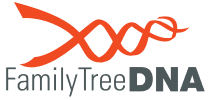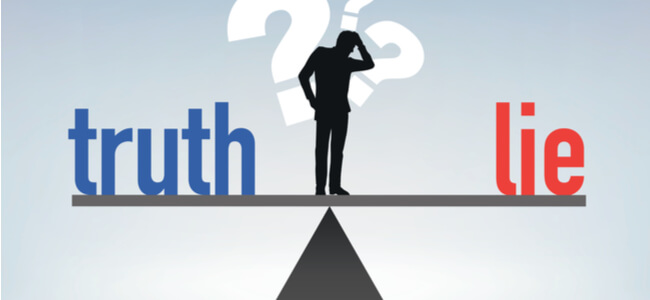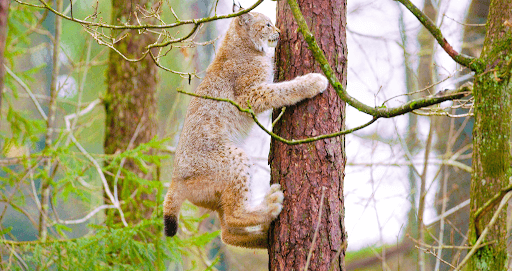Mystery Ancient Human ‘Ghosts’ Found in Our Genomes

The history of modern humans beyond the scriptures of ancient times has long been of interest to the scientific community, but it wasn’t until just over a decade ago that we made the first major discovery that found that many elements of our genome don’t come from our direct lineage.
Since it was found that Neanderthals make up a good chunk of the modern human genome, geneticists have gone all-in on prying apart DNA from fossils to find further evidence of cross-species dalliances.
Neanderthals were known to us through fossil evidence and the discovery of their tolls, living across Eurasia, hunting the likes of the aurochs, red deer, and sometimes larger prey like mammoths, until around 40,000 years ago.
So, what’s interesting about the discovered groups that have followed is that we had no idea that they existed.
These new groups – being referred to as ‘groups’ as opposed to ‘species’ or ‘sub-species’ due to their evident ability to interbreed – discovered through genome analysis are now being known as ‘ghosts,’ and there may be many more of them than in our genetic code than scientists imagined just over a decade ago.
A chain reaction of discoveries following Neanderthal genome sequencing
Having attained the bones of a Neanderthal in 2008, a team at the Max Planck Institute for Evolutionary Anthropology in Leipzig, Germany, led by Svante Pääbo extracted enough DNA to sequence, allowing a direct comparison between Homo neanderthalensis and modern humans, Homo sapiens, to see if the two groups had bred.
Through the study in Leipzig, it was found that Homo sapiens and Neanderthals mated many times, with estimates now indicating that as much of four percent of everyone’s genome – bar those of African descent – is Neanderthal.
As much as 700,000 years of evolution separates Homo sapiens and Homo neanderthalensis, and yet evidence of the two groups mating is still present in most modern humans alive today.
So, it stands to reason that the ancestors of the modern human may have interbred with another group of humans, which is what Pääbo soon found to be the case.
When examining what was thought to be a Neanderthal little finger bone from the Altai mountains, Pääbo and his team were surprised to find that DNA analysis uncovered yet another archaic human group, Denisovans.
Comparisons to the modern human genome found that our ancestors interbred with Denisovans also, which branched out from a common ancestor of the Neanderthals around 500,000 years ago.
Denisovans went on to the eastern reaches of Eurasia, stretching as far as South-East Asia. The DNA of the little-evidenced group is said to make up around three percent of Australian and Papuan genomes.
It is further evidence that the line of humans that made it to the modern-day hybridized with many other groups, which enriched the existing Homo sapiens.
Although slight, there is physical evidence of the existence of Denisovans, and, of course, there is ample evidence of Neanderthals, which led to the discoveries of these interbreeding – also known as introgression – events.
Through further analysis of the three genomes, it has been found that there may be two or more ‘ghost’ human group lineages holding up in the modern human genome.
Ghost hunting within the human genome
Examining modern human genomes and cross-referencing them with those of Neanderthals and Denisovans is not only revealing interbreeding through the history of Homo sapiens but also more insights into the existence of the other identified human groups as well as the existence of as-yet-undiscovered groups.
There is, of course, some skepticism surrounding some of the claims made – as there sometimes is in the biological sciences community without physical evidence – and they may not be deemed conclusive unless fossilized specimens are discovered, but the evidence found within genomes is as striking as it is comprehensible.
The ‘ghosts’ found in the DNA sequences of human groups indicate that other groups have been involved in the history of Homo sapiens, Neanderthals, and Denisovans, contributing to the make-up of the modern human. The only problem is that we can see their fingerprints in the DNA, but are yet to find hard evidence under the earth or in the ice.
Indonesian studies unveil three groups of Denisovans
Still quite a recently discovered group, with Denisovans coming to light in 2010 after the little finger DNA sequencing, geneticists have already found evidence of a far more diverse scene of these hominins than first assumed.
Originally perceived to merely be a group that separated from Neanderthals around 500,000 years ago, the analysis of modern human genomes in South-East Asia and Papua New Guinea suggests that there were at least three different populations of Denisovans.
Each of the three populations is suggested to have been quite diverse, with one of them being so distinct from the other two that the researchers suggest that it should come under its own bracket of a human group.
The study got underway following findings in 2018 that Denisovans had more than one lineage, going on to find that Homo sapiens and the different populations of Denisovans most likely interbred in two separate waves, creating a very varied genetic legacy that can still be traced in East Asia and parts of Oceania today.
With the population of Denisovans discovered from the Altai Mountain specimen, now known as the D0 group, the scientists found that the other two populations split off from D0 around 283,000 years ago.
However, those two other groups (D1 and D2) branched from each other before that, some 80,000 years prior.
In the study, D1 genes were found to be prevalent in people living in Papua New Guinea, with D2 boasting a much wider geographical distribution, found across much of Oceania and Asia. The D2 group found across the continents has been described as being as different from the D0 group as D0 derives from Neanderthals.
Further depth to the Denisovan genome detected
Along with the three Denisovan populations, fragments of DNA that were said to be on the very limits of detection were found in the Denisovan genome that is said to be evidence of an even earlier hominin.
The population is also considered to be a ghost and, despite it only making up around one percent of the Denisovan genome, it can be seen in the genomes of modern humans in East Asia, South-East Asia, and Papua New Guinea.
The researchers believe the fragments to have been passed on through two interbreeding events – the first of which may have involved Homo erectus, which split from Homo sapiens around one million years ago.
Some Neanderthals remained in Africa
It has been found that people of African descent are not a part of the majority who have up to four percent of their genome made up of DNA from Neanderthals. However, in African genomes, there is evidence of what might be African Neanderthals, currently identified as ghosts.
According to research, around 700,000 years ago, the group of hominins in Africa splits off from the modern human lineage, with the departing population spreading to Eurasia to become what we now see as Neanderthal.
So, that left the Homo sapien lineage in Africa and the start of the Neanderthal lineage in Eurasia. But, around the same time, another population split from the group in Africa, which then may have become this Neanderthal type identified as a ghost in the African genome.
Yet another ancient hominin group sourced in the African genome
Despite Africa being the basis of the human lineage, the African genome has been studied sparingly. But, as has been the case with that of the Neanderthals and Denisovans, there have been some key recent discoveries.
It has been found that the humans in Africa interbred with another ancient hominin group, which was before ancestors of the populations would migrate into Eurasia and split off from the group.
The humans in Africa also interbred with the other group after populations migrated off of the continent, with the DNA from this ancient ghost group in Africa now making up around four to eight percent of the ancestry of modern humans. Further study into the DNA that made its way from Africa and into Eurasian groups may yet, roughly, reveal currently unknown migrations.






